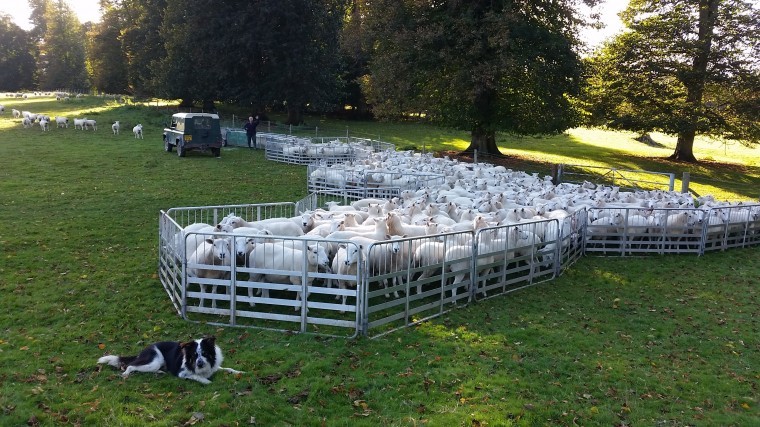Chawton Park Farm has moved out of higher level stewardship (HLS) to improve productivity from the 1,400 strong sheep flock.
HLS pays farmers to protect the environment, but Ian and Helen Roberston have found the scheme restrictive when it comes to improving their grassland and bolstering the sheep.
In 2006, the whole farm except for two fields went into HLS and all the arable land went into grassland under arable reversion. Beetle banks, wild bird seed cover and other features were part of the farm’s HLS agreement. With the grassland came a grant for fencing the fields, and the area for the farm’s red deer herd expanded. Most of the land Mr Roberston rented was in either HLS or environmental stewardship, so he was quite restricted on what he could do.
“It does affect productivity, so in 2016 our HLS agreement was ending and the new countryside stewardship scheme was starting,” Mr Roberston explained. “But I was told I would have to be out of the system for 11 months and then reapply. My reply was that I couldn’t go for 11 months of low productivity without payments and then not even know if I would be accepted in the new scheme anyway.”
Mr Robertson was already thinking that his system would have to change because it was a high risk depending on rented land to run 1,400 ewes. “Tenancies in this area are quite hard to find, so you never know whether you are going to have the land the following year.”
His calculations showed that by improving the grassland on the farm, he could increase stocking levels and more than compensate for what would be lost coming out of HLS.
Today, Chawton Park farm and the associated holdings extend to 667 acres on the edge of the North Hampshire Downs. The sheep graze about 494 acres with the remainder – which includes an area of woodland – conserved as forage for the sheep or used as pasture for the deer. Before they moved to Chawton Park Farm in 1982, Ian Robertson’s parents lived at Maidenhead in Berkshire where his mother farmed on her parents’ estate and his father was a dentist. His father retired from dentistry with the move, which at the time was an arable and beef farm. With the advent of BSE, they diversified from beef into red deer, which Ian Robertson and his wife Helen still run on the farm. “They bought a very good Swedish stag and 20 or so hinds from various estates and ran the arable side with them.”
When he came back from Harper Adams agricultural college in 1988, Ian Robertson set up a sheep milking flock in his twenties by renting 15 acres from his parents. That stopped, and he began a commercial flock of Welsh Mules and ran a share farming agreement with a local farmer to increase the numbers.
In 2001, the Robertsons set up “lamb in a van” in the year of foot and mouth to sell boxed lamb to pubs and other outlets. That lasted for a year and was doing well, but it proved difficult to persuade customers to use the whole carcase. “The margins weren’t really there without expanding it considerably,” Mr Robertson remembered.
Other diversifications were considered – including setting up a café on the farm near a local main road. But the Robertsons were advised to withdraw this plan because the council were planning a bypass.
Parcels of land were gradually rented round the farm to increase flock numbers, and in 2007 Mr and Mrs Robertson took over the farm land from his parents when they retired. “We had already taken over running the deer and carried on much as my parents had done, except that I didn’t sell meat from the farm.” Today, the farm supplies Waitrose with venison via Dovecote Park in Yorkshire.
<a href=”http://www.southeastfarmer.net/assets/flipbook/2017/SEF0117/SEF01Jan17.html#p=18>Click here to read the full feature




